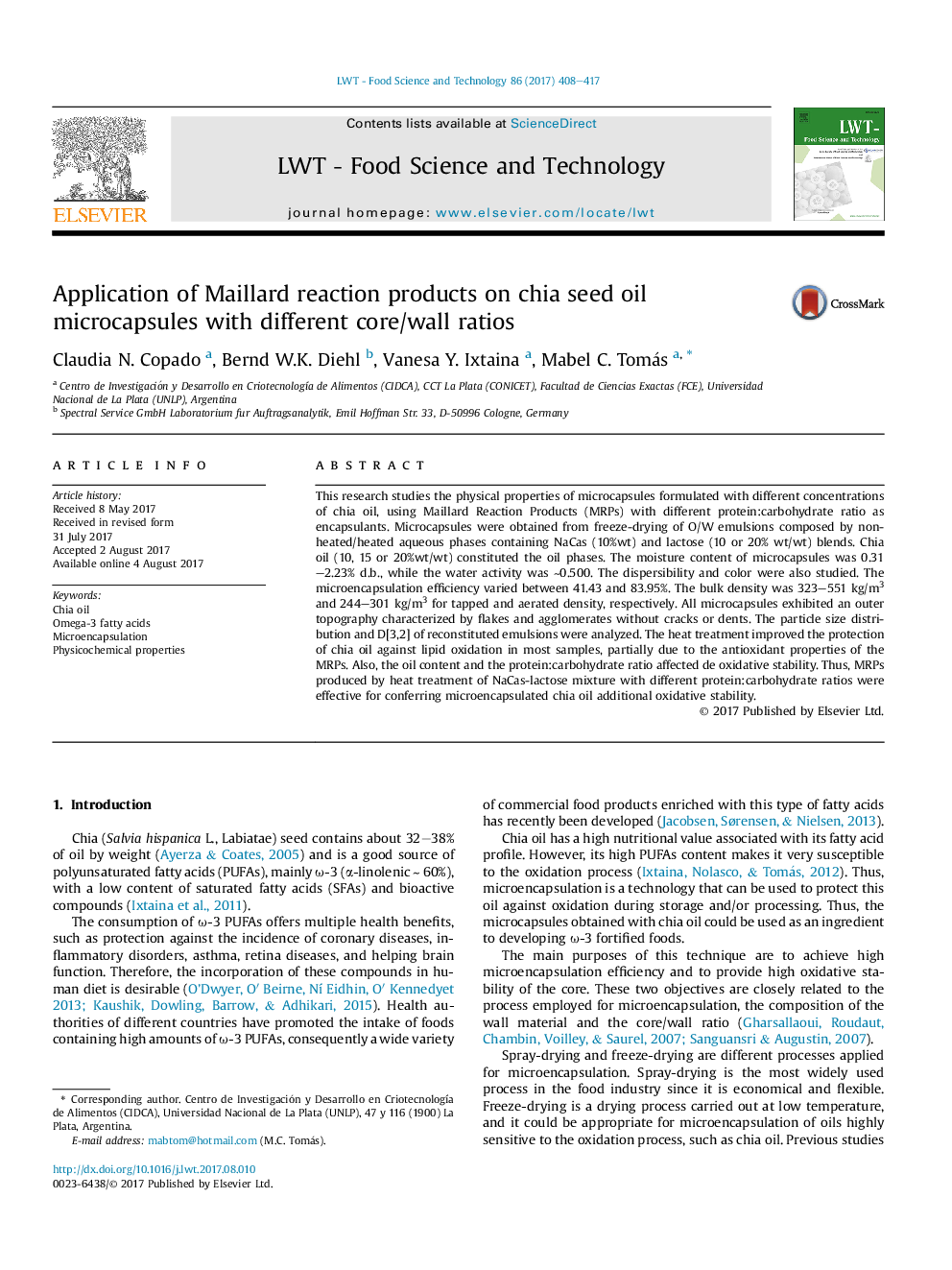| Article ID | Journal | Published Year | Pages | File Type |
|---|---|---|---|---|
| 5768703 | LWT - Food Science and Technology | 2017 | 10 Pages |
â¢Oxidative protection of chia oil by microencapsulation with diverse core/wall ratio.â¢Oxidative protection of microencapsulated chia oil by the Maillard Reaction Products.â¢Highest oxidative stability in systems with 10% oil, 20% lactose and heat treatment.â¢Highest microencapsulation efficiency in 10% oil-10% lactose-systems (ME> 80%).â¢Flake like powder particles with good physicochemical properties and dispersibility.
This research studies the physical properties of microcapsules formulated with different concentrations of chia oil, using Maillard Reaction Products (MRPs) with different protein:carbohydrate ratio as encapsulants. Microcapsules were obtained from freeze-drying of O/W emulsions composed by non-heated/heated aqueous phases containing NaCas (10%wt) and lactose (10 or 20% wt/wt) blends. Chia oil (10, 15 or 20%wt/wt) constituted the oil phases. The moisture content of microcapsules was 0.31-2.23% d.b., while the water activity was â¼0.500. The dispersibility and color were also studied. The microencapsulation efficiency varied between 41.43 and 83.95%. The bulk density was 323-551Â kg/m3 and 244-301Â kg/m3 for tapped and aerated density, respectively. All microcapsules exhibited an outer topography characterized by flakes and agglomerates without cracks or dents. The particle size distribution and D[3,2] of reconstituted emulsions were analyzed. The heat treatment improved the protection of chia oil against lipid oxidation in most samples, partially due to the antioxidant properties of the MRPs. Also, the oil content and the protein:carbohydrate ratio affected de oxidative stability. Thus, MRPs produced by heat treatment of NaCas-lactose mixture with different protein:carbohydrate ratios were effective for conferring microencapsulated chia oil additional oxidative stability.
